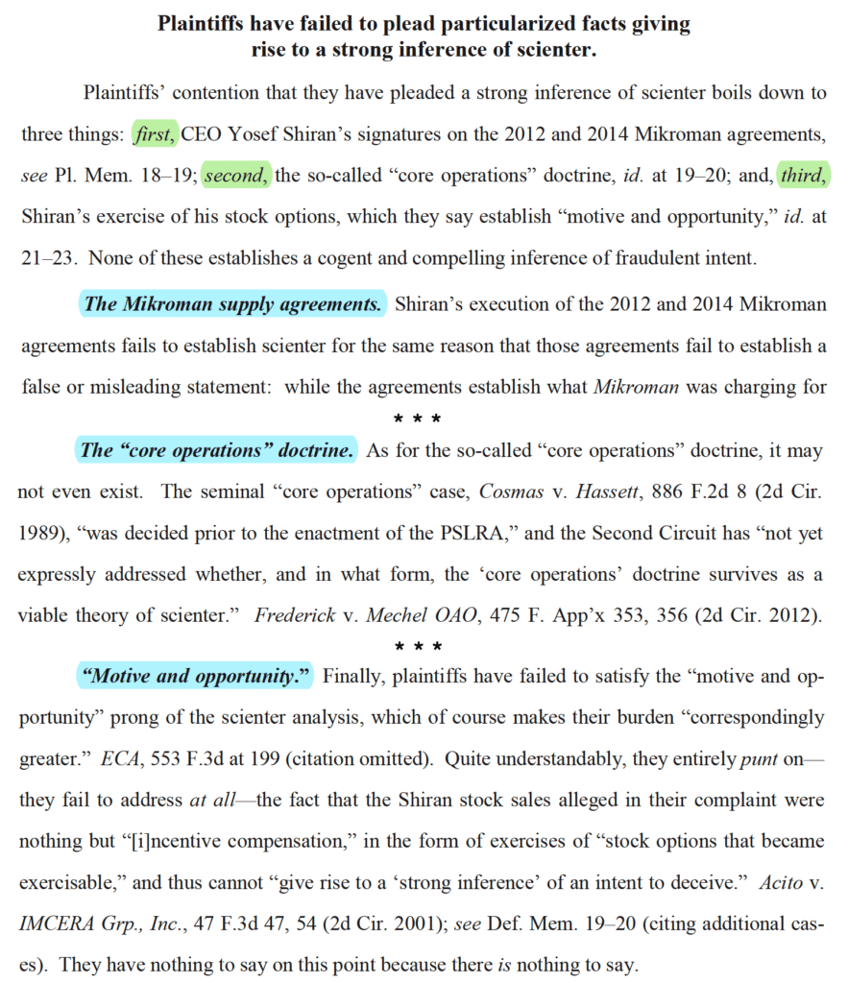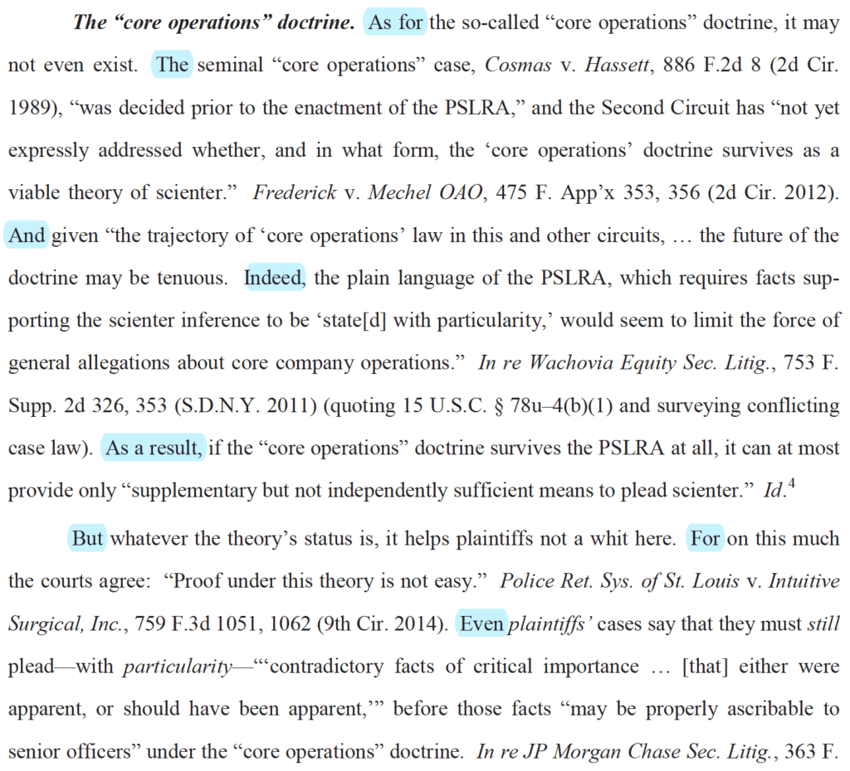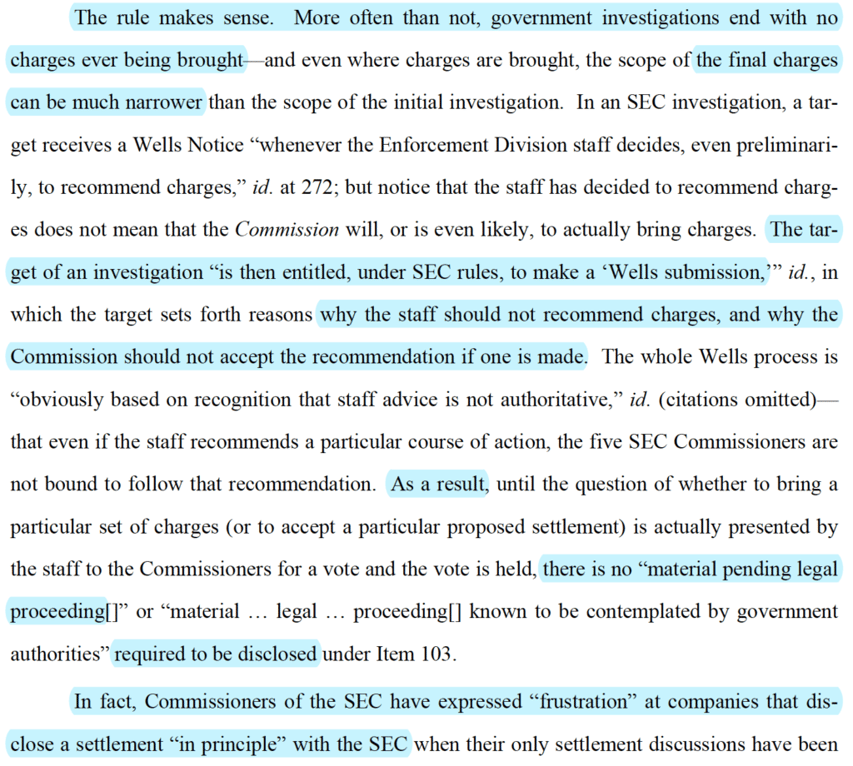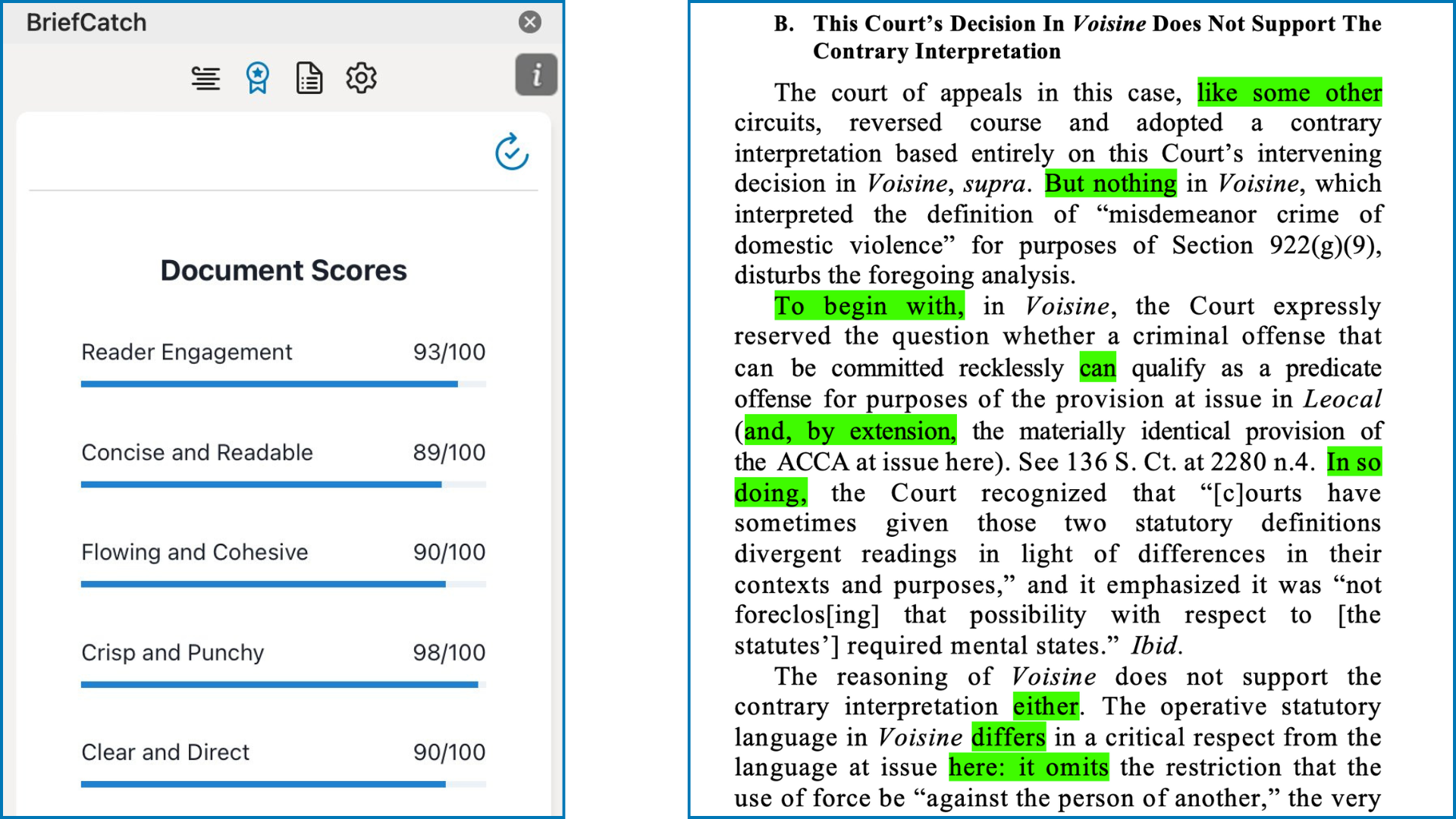Five Ways to Write Like George Conway III
When you hear the name George Conway III, do you think “Kellyanne” or “That Twitter Guy”? My goal is to make the association “Peerless Securities Litigator” or “Crack Legal Writer.”
Let’s take two routine briefs Mr. Conway signed at Wachtell: a reply brief in a case about quartz countertops and a motion to dismiss for Lionsgate.
And now let’s turn his work into five great writing takeaways.
1. Order Out of Chaos
With readers more impatient than ever, what’s easy on the eyes is all the rage: tables, pictures, bullet points, numbering, oversized fonts, and headings and subheadings galore. Yet if you go too far, you can make readers dizzy: Who wants to slog through subheadings “A.” and “B.” and “C.” in just a few paragraphs?
To the rescue: inline subheads. They’re sleek and discreet. And Conway seems to love them.
He gets a two-for-one in his reply brief below. Conway first organizes his analysis through a helpful numbered list (green), and then he returns to each item through a matching inline subhead (light blue). The subheads are stylishly formatted in bold italics and end with a period or question mark, not a colon.

2. Lighter Than Air
Organization is key. But is there more to Conway’s style than stylish subheads?
Surely. Mr. Conway, like the best writers (legal or otherwise), favors light sentence openers over their longer counterparts, such as “Furthermore” and “Consequently” and “Pursuant to.”

3. Story Time
It’s not easy to muster up passion, even manufactured passion, for the scienter standard or the distinction between an investigation and an administrative proceeding. Like all the greats, though, Conway overcomes the challenge by slipping many story-telling techniques past the fortified formality of briefs.
First, he conveys a sense of time through words, not dates:
little more than a month before the settlement
the SEC settlement that went through five weeks later
announced the final settlement the next month
some four days after the SEC settlement was announced
Second, he has a knack for vivid verbs:
both hinge on a pair
ask this Court to indulge
attempts to bolster
That suffices to defeat
get no traction from quality
turns on the difference
regurgitates a lot of facts
double down on their claim
no facts to back that
Third, he’s not afraid to be conversational:
that simply does not cut it
for a couple of reasons
and this is the clincher
which brings up the main point
not a whit
Finally, he has a feel for the rhythms of speech. Just look at the build-up to the one-word sentence below!
But on what factual basis do plaintiffs claim that quartz—a heterogeneous category of rock—is “a fungible commodity” in the way that, say, soybeans and sweet crude oil are? None.
4. Mind Meld
 Lively thinking prompts lively transitions. Precise, varied, generous, and vigorous transitions are hallmarks of first-rate analytical writing. Of all the factors that combine into our five BriefCatch scores for legal documents, the quality of transitions has one of the highest correlations with the writer’s reputation.
Lively thinking prompts lively transitions. Precise, varied, generous, and vigorous transitions are hallmarks of first-rate analytical writing. Of all the factors that combine into our five BriefCatch scores for legal documents, the quality of transitions has one of the highest correlations with the writer’s reputation.
True to form, Conway floods his motions with all sorts of intricate logical moves married to transitional devices that weave the argument threads together.
Above is a transitional cloud I created from Conway’s two motions. Inspiring, no? Be sure to exercise moderation even if so: adding one new transitional device a week is plenty.
5. What’s Right Is Right
Legal analysis can drag both writer and reader into the weeds. The rituals of analogizing and distinguishing can become ends in themselves. That’s why it can be particularly persuasive to take a step back and explain why a rule or doctrine makes sense. Conway does that effectively in the Lionsgate excerpt below. He argues not only that a regulation doesn’t require disclosure but that it shouldn’t:

For reasons unrelated to his day job, Mr. Conway is likely the world’s most glamorous securities litigator, and he might be the world’s most controversial one as well. Writing reply briefs isn’t glamorous, I admit, but I hope that this much isn’t controversial, either: whatever you think of Conway’s Twitter missives, he is one heck of a legal writer.
 By
By




